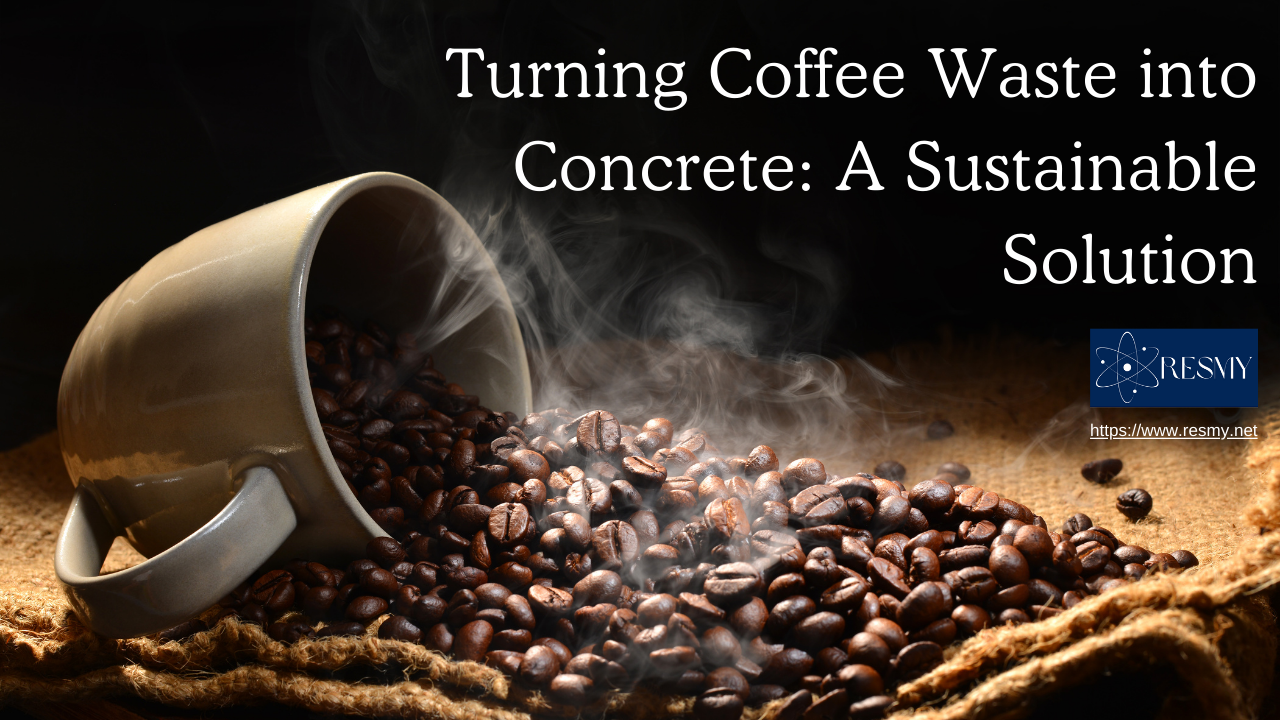Coffee grounds, a common household waste product, pose a significant environmental challenge when dumped in landfills. They decompose and release methane, a greenhouse gas 21 times more potent than carbon dioxide at trapping heat in the atmosphere. This study explores the potential of using pyrolyzed coffee grounds (biochar) as a partial replacement for sand in concrete production.
Why Use Coffee Grounds in Concrete?
- Environmental Benefits: Landfills overflowing with coffee grounds contribute to methane emissions. Recycling coffee grounds into construction materials reduces reliance on natural resources like sand and minimizes landfill waste.
- Sustainable Construction Practices: The construction industry is constantly seeking ways to incorporate more sustainable practices. Using coffee biochar in concrete production aligns with this goal.
Challenges of Using Raw Coffee Grounds
Organic Content Hinders Strength: Studies have shown that directly incorporating raw coffee grounds into concrete weakens the material. The organic matter disrupts the hydration process of cement particles, compromising the concrete’s structural integrity.
Pyrolysis: Transforming Coffee Grounds into Biochar
Pyrolysis is a thermochemical process that breaks down organic materials like coffee grounds at high temperatures in an oxygen-limited environment. This process creates a porous, carbon-rich material called biochar.
How Pyrolysis Temperature Affects Biochar Performance in Concrete
The study investigated the impact of different pyrolysis temperatures (350°C and 500°C) on the resulting biochar’s suitability for concrete.
- 350°C Pyrolysis (350CBC): Pyrolyzing coffee grounds at 350°C significantly improved their performance in concrete. Replacing up to 15% of sand with 350CBC resulted in a 29.3% increase in compressive strength compared to the control concrete. This improvement is attributed to:
- Enhanced bonding between 350CBC and the cement matrix.
- Cement paste filling the biochar’s pores, strengthening the structure.
- Internal curing due to water trapped within the biochar’s porous structure.
- 500°C Pyrolysis (500CBC): While 500CBC demonstrated good bonding with the cement matrix, its highly porous and fragile structure resulted in microcracks within the concrete, leading to a decrease in compressive strength.
Benefits of Using 350CBC in Concrete Production
100% Waste Utilization: This study suggests that all waste coffee grounds can be potentially utilized as biochar (350CBC) for sand replacement in concrete production in Australia.
Future Research Needs
- Long-term Performance: Further studies are required to assess the long-term mechanical and durability properties of concrete containing 350CBC.
- Effect of Other Pyrolysis Temperatures: Exploring the performance of biochar produced at various pyrolysis temperatures can help identify the optimal conditions for concrete applications.
- Additional Testing: Future research should include a wider range of mechanical and durability tests, such as flexural strength, tensile strength, modulus of elasticity, and resistance to abrasion, cracking, and freezing-thawing cycles.
This study presents a promising approach to waste management and sustainable construction practices. By transforming waste coffee grounds into a valuable resource for concrete production, the construction industry can reduce its environmental footprint while promoting a circular economy.
Other Topics: Medicine and Health Science, Natural Science, Agricultural Science, Engineering & Technology, Social Sciences & Humanities

